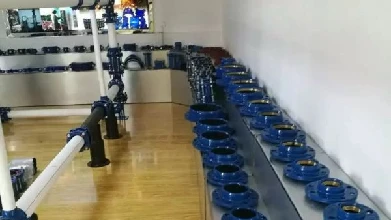Sustainable Bollards Made from Reclaimed Materials for Eco-Friendly Urban Spaces
Reclaimed Bollards A Sustainable Approach to Urban Design
In today’s rapidly urbanizing world, the need for sustainable and environmentally friendly design solutions has never been more pronounced. Among the myriad of innovations that have emerged to meet this demand, reclaimed bollards stand out as a prime example of how repurposed materials can be transformed into functional and aesthetically pleasing elements of urban infrastructure. These bollards, often made from recycled materials, not only serve to enhance safety and organization in public spaces but also contribute significantly to local sustainability efforts.
What Are Reclaimed Bollards?
Reclaimed bollards are sturdy posts typically used to control traffic, secure areas, and delineate pedestrian pathways. Unlike traditional bollards, which are often manufactured from new materials and sometimes end up in landfills, reclaimed bollards are crafted from recycled wood, metal, or concrete. By giving new life to these materials, reclaimed bollards help reduce waste and minimize the environmental impact associated with producing new construction elements.
Benefits of Reclaimed Bollards
1. Environmental Impact One of the most significant advantages of reclaimed bollards is their positive effect on the environment. By using materials that would otherwise be discarded, we reduce the need for new materials, conserving natural resources and reducing harmful emissions associated with manufacturing processes. This contributes to a lower carbon footprint for urban projects.
2. Aesthetics and Character Reclaimed materials often possess unique textures and patinas that add character to urban spaces. Cities can benefit from the distinct look of reclaimed bollards, which can seamlessly integrate with both historical and modern settings. Designers have the opportunity to choose styles that reflect the identity of a community, turning ordinary street furniture into eye-catching focal points.
3. Cost-Effectiveness When sourced correctly, reclaimed materials can be more cost-effective than new materials. In many cases, municipalities and businesses could save money by opting for reclaimed bollards. Additionally, using locally sourced materials often reduces transportation costs, further adding to the economic benefits.
4. Durability and Strength Many reclaimed materials are incredibly durable and have proven to withstand the elements over time. For instance, reclaimed wood from shipping pallets or old buildings may have already demonstrated its strength and resilience, making it an ideal candidate for construction in public spaces.
reclaimed bollards

5. Versatile Applications Reclaimed bollards can be utilized in various contexts, from city sidewalks to park entrances. They serve multiple purposes, such as preventing vehicle access to pedestrian areas, creating visual barriers, or even acting as decorative elements that enhance the landscape.
Case Studies and Implementation
Cities around the globe are beginning to integrate reclaimed bollards into their urban planning initiatives. For example, a community in the Pacific Northwest recently replaced traditional steel bollards with ones made from reclaimed timber sourced from local demolition projects. This not only preserved the region's aesthetic charm but also provided a talking point for sustainability within the community.
Similarly, cities like San Francisco have embraced reclaimed materials as part of their Green Building Ordinance, which promotes environmental stewardship in construction practices. By showcasing reclaimed bollards in parks and public spaces, these cities set an example for others while reminding residents of the value of sustainability.
Challenges and Considerations
Despite the numerous benefits of reclaimed bollards, there are challenges to consider. The quality and safety of reclaimed materials must be thoroughly assessed before use. Local governments and businesses need to work closely with reliable suppliers who specialize in reclaimed materials to ensure they meet safety and durability standards.
Conclusion
Reclaimed bollards are more than just functional elements of urban design; they symbolize a shift towards sustainability in our cities. By repurposing materials that carry history and character, we can create functional street furniture that enhances safety, aesthetics, and environmental responsibility. As urban areas continue to evolve, the use of reclaimed bollards can serve as a small but significant step towards a greener future, creating inviting public spaces that reflect the identity and values of the community. By prioritizing sustainable choices, we not only enhance our environments but also ensure a healthier planet for future generations.
-
The Smarter Choice for Pedestrian AreasNewsJun.30,2025
-
The Gold Standard in Round Drain CoversNewsJun.30,2025
-
The Gold Standard in Manhole Cover SystemsNewsJun.30,2025
-
Superior Drainage Solutions with Premium Gully GratesNewsJun.30,2025
-
Superior Drainage Solutions for Global InfrastructureNewsJun.30,2025
-
Square Manhole Solutions for Modern InfrastructureNewsJun.30,2025
-
Premium Manhole Covers for Modern InfrastructureNewsJun.30,2025
